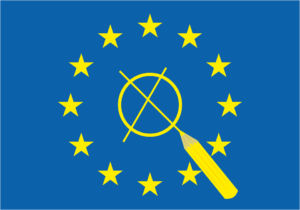Weak Signals
Here’s What You Need To Know
What does Wagner Group’s aborted march on Moscow tell us about public affairs on the Potomac? How did a journal article by a young think tanker portend big trouble for Big Tech? Did crowd sizes tell us a presidential campaign would have an unexpected finish?
In an age in which “surprise has become the standard” for too many, these three questions all provide examples of how capturing weak signals can help public affairs professionals anticipate what’s coming. So what are weak signals, how can you capture them, and what does it take to connect the right dots?
Here’s what you need to know to ensure your public affairs operation has the insights it needs to shape the future.
Subscribe to Receive Insights
"*" indicates required fields
Weak Signals Are Whispers Of The Potential Future – Ignore Them At Your Own Risk
The March On Moscow Was Months In The Making: Yevgeny Prigozhin’s Wagner Group burst into the news in late June with what the media described as a “seemingly spontaneous” and “shocking episode” as it took over a key military center and began a drive towards Moscow. Yet, for those who were closely observing, Prigozhin’s moves were anything but a surprise. Indeed, Prigozhin’s dissatisfaction with the Kremlin, Putin, and Russian military leaders had been escalating for months, with the private militia leader posting frequent public statements condemning the lack of support for his mercenary fighters and all but advertising what he was planning to do.
The Young Think Tanker Big Tech Wishes It Sidelined: Weak signals aren’t just a feature of geopolitics, though. They play out across domestic policy and politics every day. Take for instance, a well-regarded January 2017 Yale Law Journal article by a 27 year-old think tank staffer arguing Amazon’s dominance as a platform for commerce warranted more antitrust scrutiny. That staffer’s arguments helped bring to national attention a renewed antitrust movement pushing for new antitrust enforcement approaches to take on Big Tech platforms. A year later, in another journal article, the same would-be-trustbuster highlighted how her movement “is already shaping how politicians, journalists, and the public see and discuss the concentration of market power and the decline of competition.” Their ideas extended into the halls of Congress and onto the 2020 presidential campaign trail. Today, that formerly young law student, Lina Khan, is aggressively pursuing Amazon and other Big Tech platforms as chair of the Federal Trade Commission. Those weak signals indicated coming policy pressure and who would shape it if not stopped.
With Weak Signals, Knowledge Is Power: This progression from rumblings among academics or activists into a drive for political action and eventually policy results is what weak signals are all about. As we warned in 2017, “A growing chorus of academics and think tanks have begun questioning whether tech companies like Amazon, in particular, but also Apple, Microsoft, and others, have become too big, while new advocacy groups have launched to focus on this issue.” If you saw the weak signals strengthening then, you knew the debate was shifting on competition policy. The question is when and whether to squelch (or boost, depending on your objectives) the weak signals you see.
How To Sense And Assess Weak Signals So You Can Avoid Surprises
Hemingway’s Law of Disruption Is Public Affairs’ New MO: As Ernest Hemingway once wrote about going bankrupt, weak signals develop “Gradually and then suddenly.” That is exactly how disruption – be it in technology or policy – tends to happen. The weak signals are always there if you care to look. What matters is developing a rigorous and systemic approach to capture, analyze, and connect weak signals before they reach that inflection point. Public affairs and government relations teams must incorporate a robust monitoring and analysis capability into how they operate. The days of copy and pasted news clips emailed out to giant distribution lists without any context are gone. To succeed in today’s public affairs environment, you need to be able to see the gradual build up to avoid the sudden disruption.
Separate the Weak Signals From The Noise: Today’s public affairs professionals are swimming in information that can overwhelm the time and attention needed to analyze it. At the same time, the news media too often focuses on (if not furthers) the polarizing noise of our politics rather than the actual substance of our policy. Companies need to invest in their own version of noise-cancelling headphones in order to hear what the weak signals are saying. Too often, free (and paid) media monitoring tools lack the capability to truly analyze the information compiled – even if they offer charts and infographics that dazzle. That makes them just another firehouse, rather than a meaningful filter. While today it is easier than ever before to collect information, discerning the trends and anticipating where the discussion may lead is even harder.
Weak Signals Are the Breadcrumbs – Use Them To Understand Potential Policy Direction Others Miss: The weak signals roadmap is littered with clues to where the policy journey may lead, even if it doesn’t match the conventional wisdom. Take the 2016 presidential race for example. Polling and traditional assumptions missed a rising tide of support for Donald Trump for non-traditional voters. Those on the ground in places like Michigan could see it, but Hilary Clinton’s team and campaign experts ignored it. Yet, anyone tuning into on-the-ground programming like Showtime’s “The Circus” or watching local news coverage saw Donald Trump amassing mile-long lines of crowds for his rallies – something rarely if ever a feature of GOP presidential campaigns – and knew something different was happening. The signal was there for those who discerned what data mattered. We know the shock it produced when not enough people did.
The Right Insights Let You Pivot Away From A Coming Wagner, Khan, Or Clinton Moment
Public Affairs Professionals Need To Understand The Value Weak Signals Provide. Too often, public affairs and government relations professionals lean too heavily on their experience or expertise rather than neutrally assess what the data is actually showing. Approaching weak signals with a “beginner’s mindset” is critical to seeing when a shift is coming. You need to be willing to follow the breadcrumbs, even if it at first it may seem unclear or go against conventional wisdom.
A Robust Monitoring Program Puts You Ahead Of The Curve. Everything a business does in today’s polarized, politicized, and digitized environment is under scrutiny. Companies must employ that same level of scrutiny to find the weak signals in order to protect their brand and its interests and anticipate from where pressure could come next. Investing in a robust monitoring program that goes beyond keywords and digs into the details provides public affairs professionals with actionable insights built for today’s shifting landscape. When you can see the weak signals, you can make the pivots necessary to avoid your own Wagner, Khan, or Clinton moment. Here at Delve, our monitoring capabilities are built to help you do exactly that.



